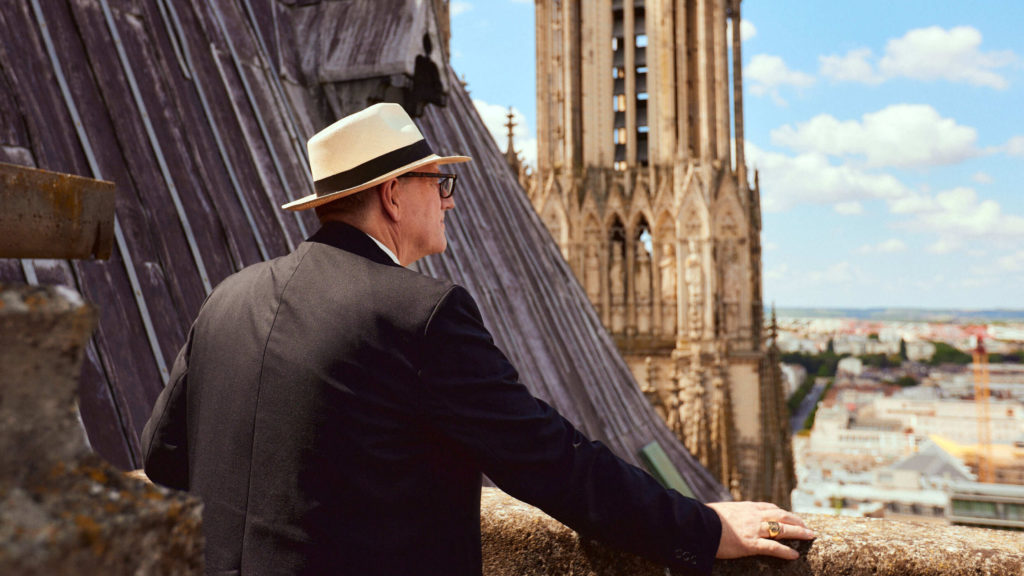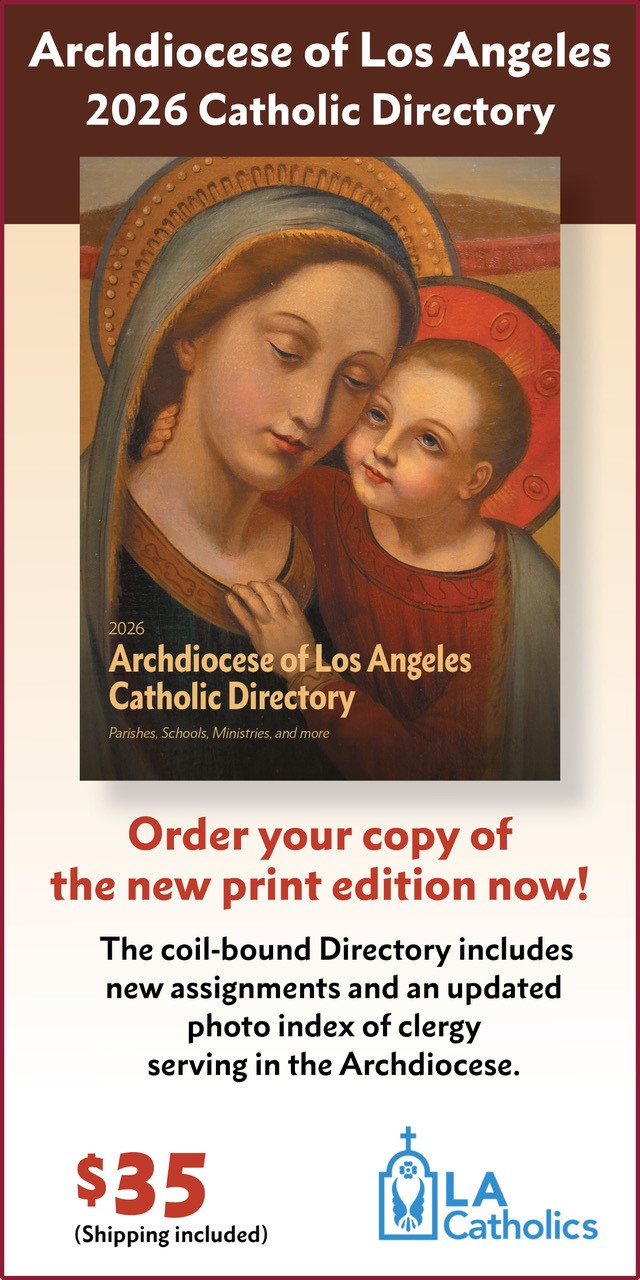I have just returned from a rather extraordinary European journey that involved three countries, six separate plane trips, and seven hotels. Now, it wasn’t exactly a vacation; rather, it was a multifaceted exercise in the evangelization of the culture. The first leg of my trip took me to France, a country where I lived for three years while pursuing doctoral studies. My purpose was to film a documentary on the Gothic cathedrals, so as to answer a basic question: Why did the Notre-Dame fire from six years ago so grab the attention of the world and galvanize so many to restore the damaged building? My instinct was (and is) that many people, especially in the secularized West, realized, however inchoately, that if Notre-Dame were destroyed, something of incalculable spiritual value would be forever lost.
And so, our film crew visited Amiens (the most voluminous of the French cathedrals), Reims (where the kings were crowned), Saint-Denis (the first truly Gothic church and the burial ground of the French monarchs), Notre-Dame (the jewel of Paris), and finally, Chartres (the greatest and most splendid of the cathedrals). What struck me over and again as I toured these buildings was how different they are from the churches constructed when I was coming of age. In the 1960s and 1970s, the aesthetic governing ecclesiastical architecture was basically Bauhaus modernism: brick walls, no decoration, a paucity of visual symbols, a hyper-stress on the value of the congregation over the church building. In illustration of that last point, I might draw attention to a sentiment expressed in a very influential liturgical document from the seventies to the effect that the building itself is but the “‘skin’ for a liturgical action.” Well, I think it’s fair to say that the architects of the great Gothic cathedrals would have had no truck with any of that. For them, the cathedral was meant to be a symbolic representation of heaven and of the transfigured earth envisioned by the author of the book of Revelation. That is why they are filled with angels, saints, and idealized elements of nature and why their stained glass is meant to resemble the jeweled walls of the heavenly Jerusalem. How wonderful that church architects with a sensibility more medieval than modernist are on the rise today.
The next stop on my itinerary was Münster, Germany, where I was to be presented with the Josef Pieper Prize. Pieper, an intellectual hero of mine, was one of the most significant Thomist philosophers of the twentieth century. His books on the virtues, on Aquinas’s philosophy, and perhaps most importantly, on the relationship between leisure and culture had a profound impact on many Catholic thinkers of my generation. So, I was deeply honored to receive this recognition, which acknowledged a link between my work and Pieper’s. The two days of the ceremony were rich indeed and included learned presentations on Pieper’s thought as well as an onstage discussion between me and two German Catholic academics. After receiving the prize, I gave a paper on Pieper’s notion of the philosophical act and why that intellectual move is of supreme importance today. A lovely touch: At the conclusion of the ceremony, a classical pianist came forward and performed a medley of Bob Dylan songs for me! I am deeply grateful to the organizers of the event and to the leadership of the Pieper Foundation for two unforgettable days.
Now, just before I arrived in Münster, I received word that I would be met by protesters unhappy with my receiving the Pieper Prize. Their principal complaint seemed to be my participation, at the invitation of President Trump, in a commission dedicated to formulating policy in regard to religious liberty in our country. Because I was representing a Catholic perspective at the table where a matter of great importance was being discussed, I was accused of fomenting American imperialism and of neglecting the human rights of immigrants! I mean, it was just so much nonsense. The intellectual level of the protesters was made evident in the crude slogans they spray-painted on the walls of the hall where I was speaking and on the façade of the church. That they felt the best way to express their dissatisfaction was through an act of desecration shows how corrupt they are. But I must say, little better were the objections expressed by certain members of the theology faculty at the University of Münster. They, too, accused me of Trumpism and, of course, being insufficiently “inclusive,” though their letters betrayed absolutely no engagement with any of my work. And I’ve published thirty books, over a hundred articles, and thousands of videos. When I was a young man, American students of theology looked eagerly to German academics for inspiration. If these professors in Münster are any indication of the state of the German academy, I would tell American students today to look anywhere else.
From Münster, I made my way to Rome for the Jubilee of Young People. On my first day in Rome, I concelebrated a Mass for “Catholic influencers,” at the conclusion of which Pope Leo made a surprise appearance, which delighted everyone in attendance. Just after Mass, I had a chance to meet him and shake his hand. I will admit that it was surreal to realize that the successor of Peter is a Chicagoan who grew up about twenty minutes from where I did. That night, under a beautiful Roman sky, Archbishop Fisichella celebrated Mass for over a hundred thousand pilgrims, and I concelebrated that Mass as well. Afterward, once again, the pope made a surprise appearance, motoring through the massive crowd in the popemobile, accompanied by the screams of the throng of kids.
The next morning, it was my privilege to address about five hundred young people from my ancestral home of Ireland. Though their country is marked by a rather extreme secularism and anticlericalism, these youthful sons and daughters of Ireland exhibited no cowardice of spirit. I encouraged them to return to Ireland under the inspiration of Saint Patrick, who managed, many centuries ago, to convert an entirely pagan country to the faith. Finally, that evening, I spoke to around four thousand young Americans who had gathered in the massive basilica of Saint Paul Outside the Walls. Speaking only about twenty yards from the tomb of Saint Paul himself, I led the crowd in a little imaginative exercise. I invited them to think of the glory and power of ancient Rome, the civilization that once dominated the world and whose rulers put to death both Peter and Paul. Then I asked them, “But where is Nero’s successor? Where is the mighty Roman Empire?” The answers came readily enough: “nowhere and turned to dust.” “But where,” I continued, “is the successor of Peter?” The answer: “We all saw him last night in Saint Peter’s Square!” I told that army of young Catholics that critics and enemies of Christianity have been predicting our demise for centuries. But we’re still standing—while they are gone with the wind.
Soaring Gothic cathedrals, scintillating intellectual dialogue about the faith, an army of young soldiers of Christ—all signs that the crucified and risen Jesus still marvelously haunts our culture.

